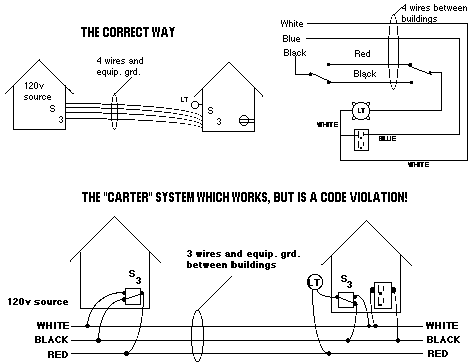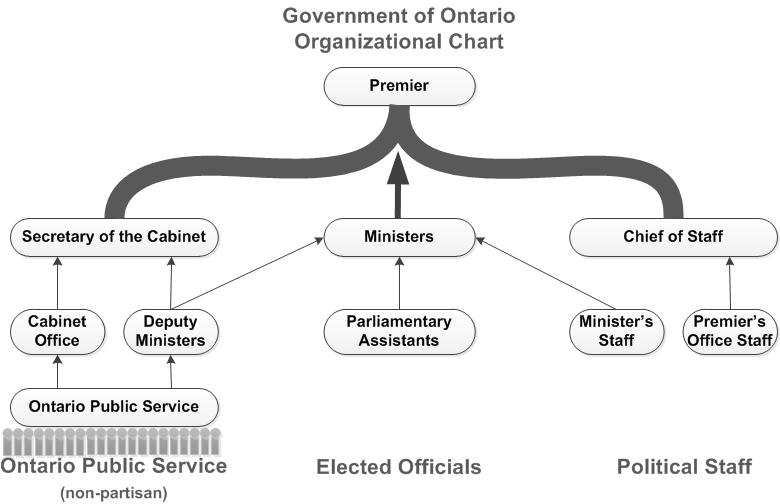
Planning provides direction, reduces uncertainty, and minimizes waste and sets standards. No activities can be done without planning. Here we are going to discuss on human resource planning not only planning. HR-planning is the entry point of human resource management. It is concerned with determining human resource requirements, job analysis, recruitment, selection and socialization. HR- planning is also called ‘Personnel planning’, ‘Employment planning’, and ‘Manpower planning’. HR- planning is the process of determining an organization's human resource needs. It is important factor in human resource management programs because it ensures the right person at right place, at right time. It helps the organization to achieve overall strategic objective.
HR- planning is the process of assessing the organization's human resource needs in light of organizational goals and making plans to ensure that a competent, stable work force is employed. It systematically forecasts an organization's future supply of, and demand for, employees. HR-planning is the process by which an organization ensures that it has right number and kinds of people at the right place, at the right time, capable of effectively and efficiently completing those tasks that will help the organization achieve its overall objectives. (DeCenzo and Robbins, 2005). It is the analysis of future personnel requirement referred to the human resource planning (Mondy and Noe, 2006).
HR- planning must be linked to the overall strategy of the organization. It evaluates human resource requirements in advance keeping the organizational objectives, operation schedules, and demand fluctuation in the background (Khadka, 2009). HR-planning should be future–oriented, system–oriented, and goal directed. It reduces uncertainty, develops human resource, improves labor relations, utilizes human resource and controls human resource. Forecasting human resource requirements, effective management of change, realizing organizational goals, promoting employees and effective utilization of human resource are the main objectives of HR-planning.

HR- planning consists of various activities. The main are as follows: (i) forecasting human resource requirements, either in terms of mathematical projections of trends in the economic environment and development in industry or in terms of judgment estimates based upon the specific future plans of a company, (ii) making an inventory of present HR-resources and assessing the extent to which these resources are employed optimally, (iii) anticipating human resource problems by projecting present resources into the future and comparing them with the forecasts of requirements to determine their adequacy, both quantitatively and qualitatively, and (iv) planning the necessary programs of requirements, selection, training and development, utilization, transfer promotion, motivation, and compensation to ensure that future HR-requirements that are properly met.
Scientific HR- planning acquires the right number of qualified people in the right job at the right time, focuses on corporate goal, utilizes human resource, reduces uncertainty, reduces labor cost, keeps records, maintains good industrial relation, and regularizes in production.
Therefore HR-planning is most essential for industrial productivity.
The main aims of this article are to assess the relationship between HR- planning and strategic planning, to identify the approaches and process of HR- planning, and to analyze the essential of HR- planning for industrial productivity. This article is basically concerned with essential of HR- planning for organizational effectiveness and industrial productivity.
HR- Planning and Strategic PlanningStrategic planning is the process by which top management determines overall organizational purposes and objectives and how they are to be achieved (Mondy and Noe, (2006). It assesses the opportunities and threats in external environment and strengths and weaknesses in internal environment. HR- planning is the process of systematically reviewing human resource requirements to ensure right man at right place, at right time. HR-planning plays an important role to achieve strategic objective. Therefore, there is strong relationship between strategic and HR- planning.
Strategic planning scans environment using different forecasting tools and identifies its strengths, weaknesses, opportunities and threats. HR- planning manages qualified, experienced, competent and motivated employees to utilize strengths and opportunities and to overcome weaknesses and threats. So, there is close relationship between strategic planning and HR- planning. Strategic planning determines corporate strategic objectives and HR- planning provides required human resource to achieve these objectives. Thus, strategic planning and HR- planning are related with each other. Relationship between strategic planning and HR- planning can be explained in two headings. They are: follower relationship, and partner relationship.
Follower relationshipStrategic plan is corporate level plan. It consists of all organizational plans including human resource plan. HR-planning helps in the achievement of corporate plan. HR-planning is always based on strategic planning. HR-planning can not be formulated without strategic planning, and strategic planning can not be achieved without HR-planning. There is hierarchical relationship or follower relationship between strategic planning and HR- planning.
Partner relationshipEqual or parallel relationship is known as partner relationship. Strategic planning and HR- planning have partner relationship between each other. HR-planning acts as a partner to accomplish strategic planning. Human resource management should provide a partner role to HR- planning in the formulation of corporate strategic plans. The main objectives of partner relationship are to: (1) identify human resource needed to achieve corporate goals, and (2) link human resource plan with corporate strategic plans.
Approaches to HR- PlanningHR- planning is the process of determining an organization's human resource needs. It has three approaches. They are: quantitative approach, qualitative approach, and mixed approach.
Quantitative approach
This is traditional approach. It is management-driven approach. It is also known as top-down approach and hard approach. As name implies, it gives focus on required numbers of employees rather than personal aspect of individual. Quantitative approach of HR- planning is foundation of Human Resource Management Information System (HRMIS), Demand Forecasting Technique (DFT), and Work Study Technique (WST).
HRMIS: Human resource management information system gives information about name, post, qualification, experience, remuneration and allowance, performance and updated human resource inventory. Computerized HRMIS facilitates in formulation of HR- planning.
DFT: Trend analysis, mathematical models, economic model, Markov analysis, etc. are major demand forecasting techniques.
WST: Work-study technique determines the work standard of employees/people. Observation, interview, diary, etc. are used as work-study techniques.
Qualitative approach
Qualitative approach is employee-driven. It is also known as bottom-up approach and soft approach. As name implies, it gives focus on personal aspect of individual rather than required numbers of employees.
Qualitative approach of HR- planning is concerned with–(i) matching organizational needs with employee needs, (ii) remuneration and incentive plans, (iii) recruitment, selection, development of employees, (iv) career planning, (v) promotion and transfer, (vi) employees safety, welfare and working environment, (vii) motivational activities, and (viii) maintenance.
Mixed approach
This is combination of quantitative and quantitative approaches. It balances between qualitative and quantitative approaches. This approach of HR- planning produces better result because it is combined form of qualitative and quantitative approaches.
HR- Planning Process
HR- planning is a process. It consists of five stages. They are: assessing current human resource, forecasting human resource demand, forecasting human resource supply, comparing or matching demand and supply forecasts, and action plans.
Assessing current human resources
Assessing current human resource is the first step of HR- planning process. It begins by developing profile of current employees. This internal analysis includes information about the workers and the skills they currently possess (DeCenzo and Robbins, 2005). It is based on human resource inventory, human resource information system, succession planning and job analysis.
Human resource Inventory: Human resource inventory provides detail information about currently available employees in the organization. It includes following information about employees: name, education, performance, experience, training and development, current position, compensation, special skills, capabilities, language, and others.
Human resource information system: Human resource information system is a computerized information system, which assist in the processing human relation information. It provides following information: employee's name, surname, date of birth, address and marital status, employee's current post, employee's salary, allowance, facility and other financial incentives, employee's qualification, experiences, skills and competencies, employee's performance appraisal, and information related with employee's language, culture, religion, and so on.
Job analysis: Job analysis provides information about job currently being done and qualification, experience, skills; competencies that individuals need to perform that job. Job description, job specification and job evaluation are the main objectives of job analysis.
Forecasting human resource demandForecasting human resource demand is second step of HR- planning process. It begins after assessing current human resource in the organization. Forecasting human resource demand is the process of estimating future human resource requirements to meet future needs of the organization. There are several reasons to conduct forecasting human resource demand. They are: quantity the jobs necessary for producing a given number of goods, or offering a given amount of services, determine what staff-mix is desirable in the future, assess appropriate staffing levels in different parts of the organization so as to avoid unnecessary costs, prevent shortage of people where and when they are needed most, and monitor compliances with legal requirements with regard to reservation of jobs. Forecasting human resource demand influenced by many factors. The main are as follows:
- Corporate objectives: Forecasting human resource demand influenced by corporate objectives. Objectives may be about- technological changes, restructuring, downsizing, new product line addition, market expansion, and others.
- Environmental forces: Forecasting human resource demand also influenced by environmental forces like economic, political-legal, social-cultural, and technological.
- Labor market: Forecasting human resource demand is also influenced by labor market. Labor market may be domestic as well as international.
- Other factors: Forecasting human resource demand also is influenced by other factors like rate of retirement, rate of turnover, promotion, transfer, etc.
Forecasting human resource demand techniques may be classified under three categories. They are:
- Expert forecasting techniques: Expert's forecasting techniques include Delphi technique, group technique, and survey technique.
- Managerial estimate techniques: Managerial estimate techniques include top-down approach and bottom-up approach.
- Statistical techniques: Statistical techniques include ratio analysis, regression analysis and time series analysis.
Forecasting human resource supplyThe third step of HR- planning process is forecasting human resource supply. It begins after assessing current human resource and forecasting human resource demand. Forecasting human resource supply estimates future sources of employees likely to be available from within and outside on organization. In other words forecasting human resource supply measures the number of people likely to be available from within and outside an organization, after making allowance for absenteeism, internal movement and promotions, wastage and changes in hours and other conditions of work.(Armstrong, 1992).
There are several reasons to conduct forecasting human resource supply (Aswathappa, 2005). They are: (i) helps quantify number of people and position expected to be available in future to help the organization realize its plans and meet its objectives, (ii) helps clarify likely staff-mixes that will exists in the future, (iii) assesses existing staffing levels in different parts of the organization, (iv) prevents shortage of people where and when they are must needed, and (v) monitor expected future compliance with legal requirements of job reservations. Forecasting human resource supply is influenced by many factors. The main are as follows:
Exiting human resource: Quality and quantity of existing human resource directly affect the forecasting human resource supply.
External source of supply: Organization can look-out for prospective employees from external source like labor market, educational institutes (Universities, Colleges or Vocational Schools, etc.), training institutes, etc. Such external sources of supply affect the forecasting human resource supply.
Internal source of supply: Organization can internally fulfill its vacancy. Human resource inventory, inflows and outflows, turnover rate, absenteeism rate, job movement rate, promotion, transfer, etc. provide information about employees likely to be available from internal sources.
Forecasting human resource supply techniques may be classified under two categories. They are:
- Managerial judgment techniques: Managerial judgment techniques include replacement planning and succession planning.
- Statistical techniques: Statistical techniques include Markov analysis, trend analysis and regression analysis.
Matching demand and supply forecastsMatching demand and supply forecasts is the fourth step of HR- planning process. It begins after forecasting human resource demand and supply. A matching of demand and supply forecasts gives us the number of employees to be recruited or made redundant as the case may be.
Action plansThe last step of HR- planning process is action plan. It is prepared to deal with shortage and surplus of human resource in an organization. It helps organization to implement human resource planning. The main activities of action plan are as follows:
- Recruitment plans: Recruitment plans indicate the numbers and types of people recruited at the specific time period.
- Selection plans: Selection plans indicate selection of qualified, competent and experienced people.
- Training plans: Training plans indicate numbers of people at all levels who will undergo training and identify the need of training.
- Retention plans: Retention plans indicate reasons for employee’s turnover. Career planning, incentive, promotions, participation, quality of work life are examples of retention plans.
- Appraisal plans: Appraisal plans indicate strengthened appraisal system. Appraisal plans motivate the employees for enhanced performance.
- Redeployment plans: Redeployment plans identify the employees who need to be transferred and trained.
- Downsizing plan: Downsizing plan is that step which is taken by management to offload of overstaff. It includes golden handshake, layoff, voluntary retirement scheme, and so on.
HR- Planning and ProductivityHR-planning is very essential for productivity. It does following activities to enhance managerial effectiveness and industrial productivity:
Acquires best human resources: HR- planning determines future human resource requirements in an organization. The main objective of HR-planning is to manage right person at right place at right time. Beyond this, it is concerned to job analysis, recruitment, selection, and socialization. Therefore, HR-planning is essential for productivity.
Focuses on corporate goal: HR- planning is goal directed. It gives focus on corporate goal. Human resource goals are linked to overall strategic goal of organization. Such linkage helps to promote better co-ordination, easy implementation, and effective control. Therefore,
HR-planning is essential for productivity.
Utilizes of human resources: HR- planning helps to proper utilization of human resource in an organization. It facilitates in motivation, performance appraisal, and compensation management. And it also identifies surplus or unutilized human resource. So, HR- planning is essential for productivity.
Develops of human resources: HR- planning determines the numbers and the qualification of employees. Recruitment, selection, placement, and socialization are done scientifically. It also provides adequate time and place for seminar, workshop, training and development and other career development programs to the development of human resource for productivity.
Reduces uncertainty: Environmental factors like economic, political-legal, social-cultural, and technological can create uncertainty. HR- planning reduces such uncertainty by forecasting future human resource. It matches demand and supply of human resource. It also develops recruitment, selection, placement, and socialization basis after studying and analyzing such environmental factors. This is very essential for productivity.
Reduces labor cost: HR- planning reduces labor cost, which minimizes cost of production and product price. Labor cost can be reduced by utilizing available labor force effectively. Reduction in labor cost promotes competition ability of organization. Thus, HR- planning is also essential for productivity.
Regularizes in production: HR- planning ensures regularity in production. It determines right person at right job. It also facilitates to provide motivational incentives and development opportunities. This creates regular working environment. Therefore, HR- planning is essential for productivity.
Maintains good industrial relation: HR- planning maintains good labor relations. It is very important to achieve overall corporate objectives. It provides qualified, competent, and motivated personnel to promote labor or industrial relations in an organization. Thus, HR- planning is very essential for productivity.
Keeps records: HR- planning keeps records of human resources. Records are kept of all activities of human resource like recruitment, selection, placement, promotion, performance appraisal, compensation, benefits, rewards, punishment, and so on. Such records facilitate human resource management to take right decision about employees.
Controls human resources: Human resource planning controls human resources. It determines the numbers and kinds of employees. It also controls unnecessary recruitment, selection and placement. There will be no room for nepotism and favourism. Therefore, human resource planning is important in human resource management.
ConclusionHR- planning is a process by which an organization ensures that it has the right number of qualified person in the right job at the right time. It is never ending process which utilizes human resource and matches demand and supply. HR-planning is directed by overall strategic objective of the organization. The main conclusions of this article are: (i) there is follower and partner relationship between strategic planning and HR- planning, (ii) HR- planning has three approaches. They are: quantitative approach, qualitative approach, and mixed approach, (iii) assessing current human resources, forecasting human resource demand, foresting human resource supply, matching demand and supply forecasts, and action plans fall under HR- planning process, and (iv) HR- planning is essential for productivity and organizational effectiveness because it acquires best human resources, focuses on corporate goal, utilizes human resources, develops human resources, reduces uncertainty and labor cost, regularizes production, maintains good industrial relation, keeps records, and controls human resources.
 The wave of democratization that swept southern Europe, Latin America, and Eastern Europe in the mid-1970s and in the late 1980s brought to the fore the relationship between bureaucracy and democracy. In the democracies that have emerged in the last quarter of the twentieth century, the civil service may be far from responsive, reliable, and responsible. A civil service may be far from responsive, reliable, and responsible. A civil service that has been associated with an authoritarian regime can easily be considered illegitimate after the transition to democracy takes place. To prove it legitimate, the civil service must submit to the leadership of new democratic governments. Such governments often begin their terms in office by "cleansing" the ranks of the civil service of authoritarian elements. Thus the civil service of authoritarian elements. Thus the civil service in a new democracy is vulnerable, more so if it has traditionally proved to be inefficient.
The wave of democratization that swept southern Europe, Latin America, and Eastern Europe in the mid-1970s and in the late 1980s brought to the fore the relationship between bureaucracy and democracy. In the democracies that have emerged in the last quarter of the twentieth century, the civil service may be far from responsive, reliable, and responsible. A civil service may be far from responsive, reliable, and responsible. A civil service that has been associated with an authoritarian regime can easily be considered illegitimate after the transition to democracy takes place. To prove it legitimate, the civil service must submit to the leadership of new democratic governments. Such governments often begin their terms in office by "cleansing" the ranks of the civil service of authoritarian elements. Thus the civil service of authoritarian elements. Thus the civil service in a new democracy is vulnerable, more so if it has traditionally proved to be inefficient. In fact, additional conflicting pressures may be exerted on the civil service of a new democracy. The democratic state needs a civil service that is to a certain extent resistant to all governments in order to safeguard the well being, the security, and the defense if the people living within its territorial boundaries. This demand of the people living within its territorial boundaries. This demand clashes with drive of the government party (or coalition of parties) to use the capacities of the civil service freely to fulfill their election promises. For instance, nationalist governments may want to expand the state freely to fulfill their election promises. For instance, nationalist governments may want to expand the state beyond its boundaries, socialist ones to reform it, neoliberal ones to reduce its economic functions to a minimum. Political parties that govern in new democracies may use the civil service for any of these purposes, depending on their profile and the constraints they face once in power.
In fact, additional conflicting pressures may be exerted on the civil service of a new democracy. The democratic state needs a civil service that is to a certain extent resistant to all governments in order to safeguard the well being, the security, and the defense if the people living within its territorial boundaries. This demand of the people living within its territorial boundaries. This demand clashes with drive of the government party (or coalition of parties) to use the capacities of the civil service freely to fulfill their election promises. For instance, nationalist governments may want to expand the state freely to fulfill their election promises. For instance, nationalist governments may want to expand the state beyond its boundaries, socialist ones to reform it, neoliberal ones to reduce its economic functions to a minimum. Political parties that govern in new democracies may use the civil service for any of these purposes, depending on their profile and the constraints they face once in power.














